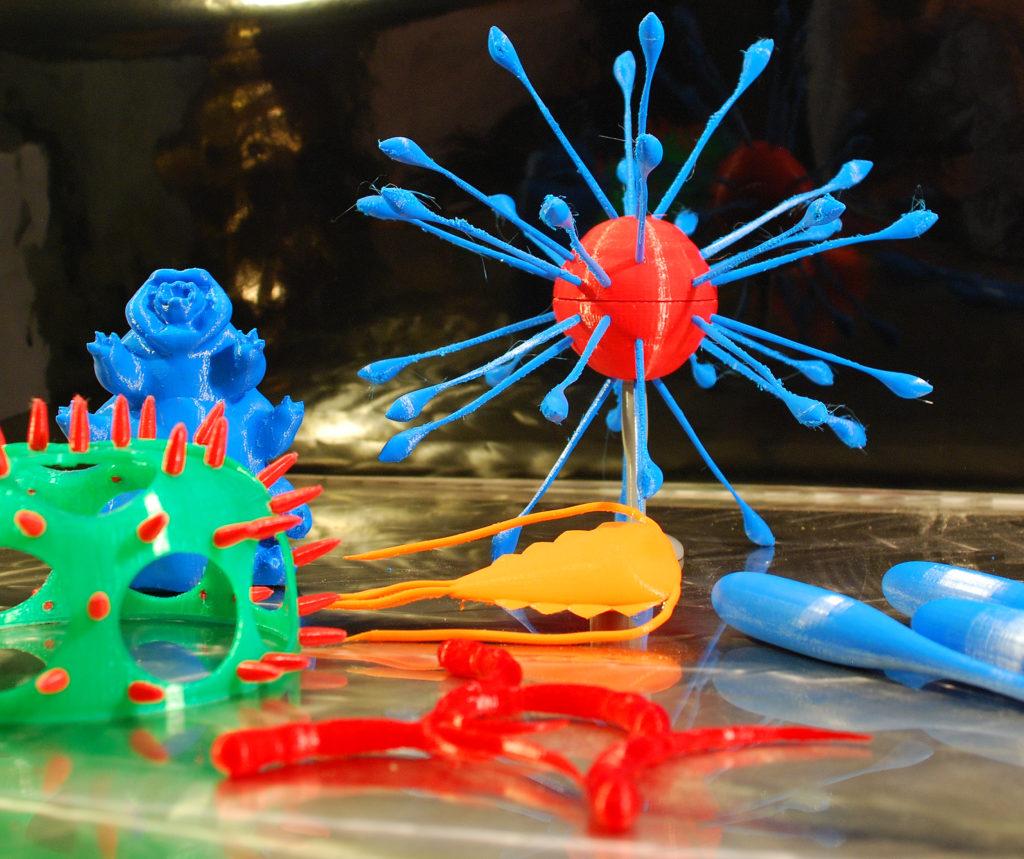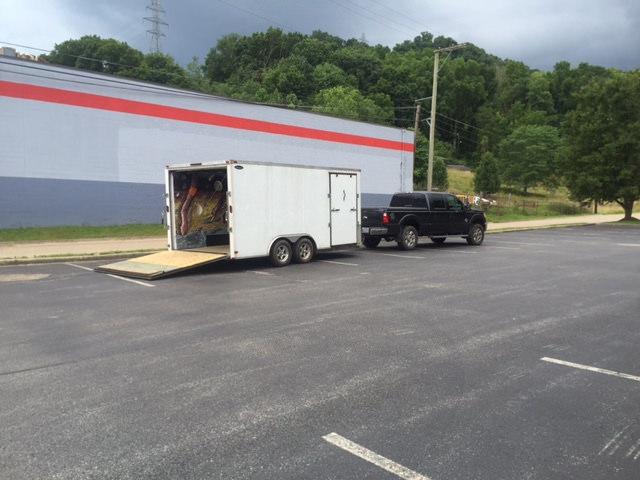Nematodes and Ribosomes and Tardigrades, Oh My! 3D Printed Microorganisms to Star in West Virginia Soil Tunnel Trailer Project

This dog hanging out in the nearly-completed Soil Tunnel Trailer appreciates dirt. [Image: Capitol Conservation District]
The West Virginia Conservation Agency and Capitol Conservation District are collaborating on the Soil Tunnel Trailer project, an initiative that aims to teach both children and adults about soil, water and agriculture through a mobile classroom. The project has been implemented elsewhere in the country, and West Virginia has been putting their own together thanks to grant funding. The trailer will be unveiled at the West Virginia State Fair, which will be running August 12-21, and it will contain some fun 3D printed creatures, thanks to the Robert C. Byrd Institute for Advanced Flexible Manufacturing (RCBI).
While many people think of soil as an inanimate substance, it’s not, and Aimee Figgatt, district manager of the Capitol Conservation District, wanted to come up with a memorable and fun way to teach visitors to the trailer about the variety and importance of the life teeming in the soil beneath our feet. Along with her husband, an engineer, Figgatt is a mentor to a local robotics team, so she’s familiar with how technology can hold the interest of young people.
“Soil is not just dirt on the ground. It’s actually alive, and that really surprises people,” said Figgatt, who has been working in the Soil Tunnel Trailer project since 2012. “I wanted to include technology, in this case, 3D printing, because that is where education is going and that is what kids like.”
She contacted RCBI, a specialized technical training center whose 3D printing resources have led to partnerships with other educational and artistic institutions in the past. Figgatt had some microorganisms in mind, and with help from RCBI staff members, she designed several 3D models that were then printed on the institution’s various 3D printers. The final products were scaled-up (in some cases up to 3,000 times) 3D printed microorganisms that will leer at visitors from behind glass.
It turns out that microorganisms, when scaled up thousands of times, look a lot like scary monsters, which kids love, so Figgatt believes that the display will get young observers to give serious thought to the soil they walk on every day. The 3D printed creatures include the weirdly popular tardigrade, or water bear, which may be the only microorganism to have something like a cult following, plus protozoa, pseudomonas, radiolaria, giardia protozoa, nematodes and ribosomes.
“We’re excited to participate in the State Fair by contributing customized, 3D Printed organisms,” said Charlotte Weber, RCBI Director & CEO. “While the fair’s audience may expect to see common livestock, our larger-than-life soil creatures should encourage children and adults to take a closer look at microorganisms.”
The glass portals that enclose the microorganisms will give visitors the impression of looking through microscopes. As an environmental issue, soil conservation isn’t the most glamorous, especially compared to the plight of polar bears or rainforests; many people don’t even realize that it is an issue. Initiatives like the Soil Tunnel Trailer are critical in teaching kids about the ecosystem that lives in our dirt and how vital it is to our larger ecosystem.
I can’t think of a better way to get through to children than this, really. Kids may not be overly concerned about erosion or mineral depletion, but protecting the tardigrade? That’s important. After the State Fair, the Soil Tunnel Trailer will be traveling to other sites and events around West Virginia; for more information, contact Figgatt at 304-759-0736. Discuss further in the 3D Printed Microorganisms forum over at 3DPB.com.
Subscribe to Our Email Newsletter
Stay up-to-date on all the latest news from the 3D printing industry and receive information and offers from third party vendors.
You May Also Like
NSF Awards Kentucky $1M for Advanced Manufacturing
The National Science Foundation has awarded a $1 million grant to the University of Louisville for the Advancing Manufacturing and Building Construction Technologies (NSF AMT) project. This initiative is part...
3D Printing News Briefs, May 11, 2024: 3D Printed Stent, Tower, Sculptures, & More
We’re starting off with medical research in today’s 3D Printing News Briefs, as researchers in Korea used CT images and 3D printing to fabricate an educational simulator for a mastoidectomy....
3D Printing Unpeeled: Wind Turbines, Probiotics and Lenses
TPI Composites, ORNL and Ingersoll Rand are working to make wind turbine tooling segments that can be 18.3 meters long. These elements also include resistive wires that help keep the...
Tethon 3D Releases Cost-effective Bioprinter
Tethon 3D, known for its ceramic-loaded DLP materials, custom resins, and DLP 3D printers, has recently released a bioprinter. Vat polymerization printers like DLP systems have been widely used by...



































